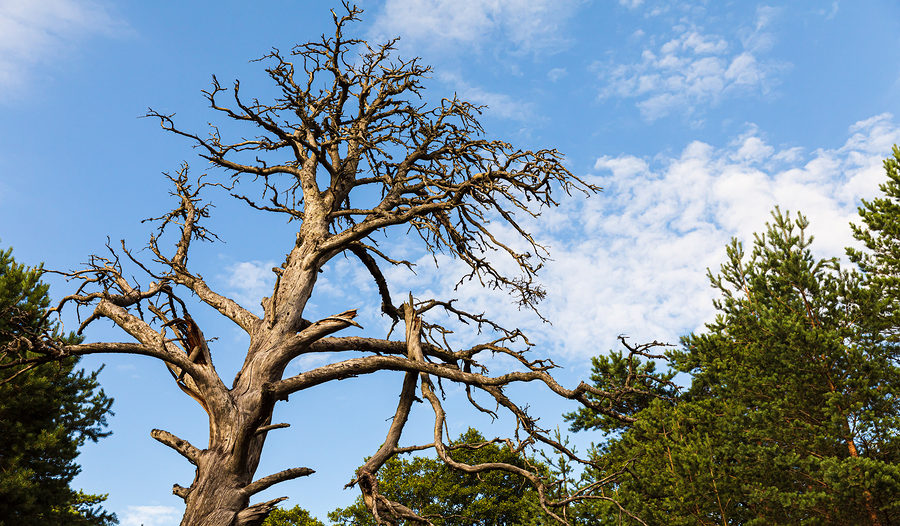It’s quite easy to remove a young evergreen, but mature trees require a lot more work. Pine trees and other evergreens are beautiful and ornamental assets to residential landscapes. They provide their beauty and benefits all year long, in all regions of the country. In some cases however, they need to be removed. Most often, pine trees need to be removed if they are dead, dying, or need to be transplanted to another location. Either way, if you choose to dig up your pine tree on your own, you will need to review some guidelines to the process. Continue reading to learn how to dig up a pine tree and tips for tree removal.
Evergreen Tree Removal
In order to protect a tree during transplanting, you must dig it up carefully and at the right moment. The guidelines below is a method for safely removing pine trees for transplanting purposes. You may also, however, refer to these same guidelines to remove a dead or dying pine tree as well. It is important to know that pine tree transplanting is a lot of work, and requires some pre-planning and preparation. It is strongly encouraged to have another capable person there to help. This is especially important for large trees. If you are not in good physical health, it is not a good idea to remove a pine tree on your own since it requires physical effort. Instead, call a local tree service company for safe and professional tree removal you can afford. For those who wish to remove a moderate size or mature pine tree, here’s how to get started:
1. Always remove pine trees while they are still dormant. This is in the late winter months, between February and April.
2. Do not attempt to remove a pine tree with a branch spread of more than four feet wide. Any larger, and you will need heavy equipment to manage the weight and height of the tree.
3. The night before digging up the pine tree, water it thoroughly around the base. This will keep it well-hydrated enough to prevent distress during the transplant process. Allow a hose to flow for 10 or 15 minutes around the base of the tree for a deep watering. Soil should be wet as deep as 5 inches.
4. Measure and mark a radial line around the base of the tree to use as a guide for digging up the tree’s root ball. Increase the radius by 2 inches for every 12 inches of branch spread.
18 inch Branch Spread = 1 Foot Radius
24 inch Branch Spread = 14 inch Radius
36 inch Branch Spread = 16 inch Radius
5. Use the tip of a sharp shovel to pierce the perimeter of your marked radial line to begin the dig. Continue to etch out this perimeter until you reach 9 inches deep for an 18 inch radius.
11 inches Deep = 2 Foot Radius
13 inch Deep = 3 Foot Radius
14 inch Deep = 4 Foot Radius
6. At a 45 degree angle, dig down below the root ball. Pull back on the shovel handle to help pry roots from the soil. It is safe to cut tough, vertical roots that won’t break free. Use your shovel edge or tree pruning shears.
7. At this point, you will need assistance lifting the tree from the ground. Do this by holding onto the base of the tree trunk, and then working your hands down under the root ball, using your legs to lift it out of the ground.
8. After the tree is out of the ground, wrap the root ball in wet burlap. This keeps the roots hydrated and prevents them from overheating. Use jute twine to secure the burlap while you transport your pine tree.
9. Fill the empty hole with leaves or soil.
It is highly important to call a licensed arborist for help with large-tree transplanting and removal. They retain the proper tools, training, and equipment to safely and efficiently remove trees. If you have never dug up a tree before, and it is a tree you wish to preserve, it is highly recommended to trust a professional to ensure accuracy and safety.




